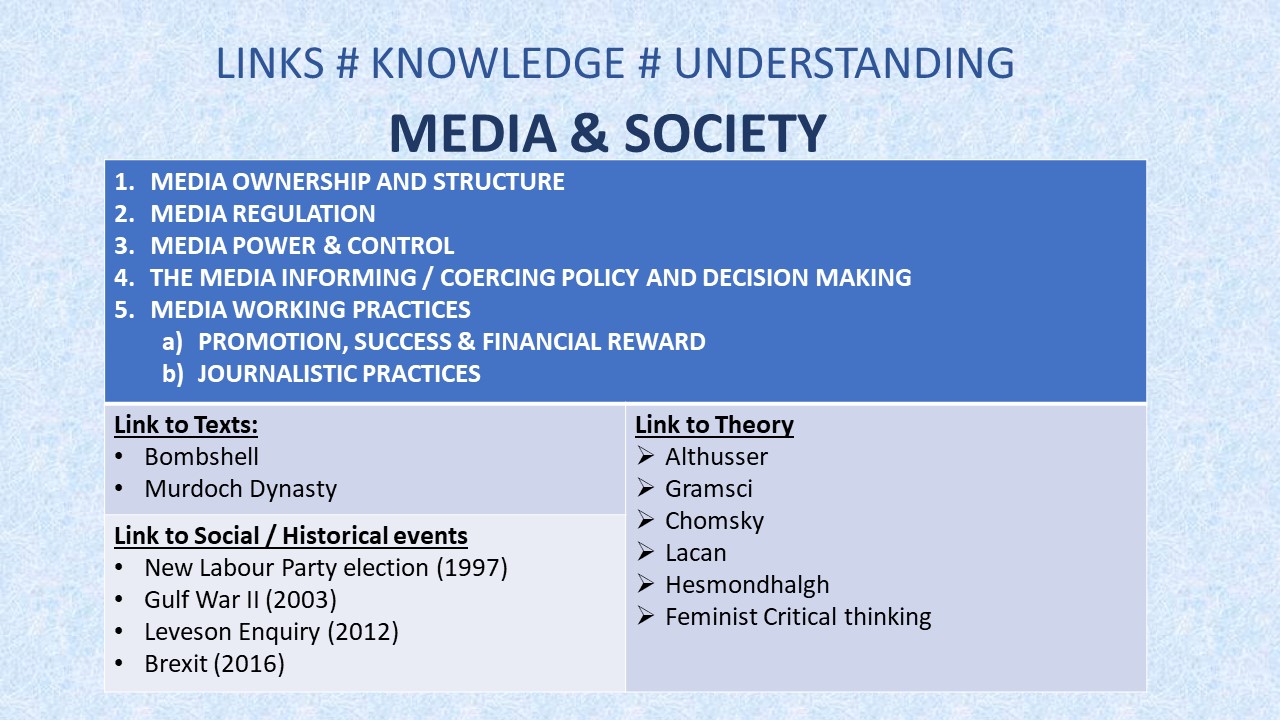Key words:
- Media concentration / Conglomerates / Globalisation (in terms of media ownership) – Massive media companies (conglomerates) which own a vast field of the media horizontally and vertically that have a global impact with their products.
- Vertical Integration & Horizontal Integration – vertical integration of a company is owning branches within the same media (film -distribution-exhibition)
- Gatekeepers – people who regulate what is show and advertised in the industry (letting people/info) in or keeping them out)
- Regulation / Deregulation – government intervention in order to regulate and prevent monopolies.
- Free market vs Monopolies & Mergers – monopolies are made when a certain company own all the horizontal forms of one media company (eg all radio stations)
- Neo-liberalism and the Alt-Right
- Surveillance / Privacy / Security / GDPR
David Hesmondhalgh
Two of Hesmondhalgh’s key ideas are:
- the idea that the largest companies or conglomerates now operate across a number of different cultural industries
- the idea that the radical potential of the internet has been contained to some extent by its partial incorporation into a large, profit-orientated set of cultural industries
Hesmondhalgh argues that major cultural organisations create products for different industries in order to maximise chances of commercial success. In relation to online products, he argues that major IT companies now compete with the more traditional media conglomerates within the cultural sector: ‘Microsoft, Google, Apple and Amazon are now as significant as News Corporation, Time Warner and Sony for understanding cultural production and consumption.’
Hasmondhalgh’s theory: This suggests that cultural industry companies. Minimise risk + Maximise Audiences = Maximise Profit
Murdoch Media Empire

- After his father’s death in 1952, Murdoch took over the running of The News, a small Adelaide newspaper owned by his father. In the 1950s and 1960s, Murdoch acquired a number of newspapers in Australia and New Zealand before expanding into the United Kingdom in 1969, taking over the News of the World, followed closely by The Sun. In 1974, Murdoch moved to New York City, to expand into the U.S. market; however, he retained interests in Australia and Britain. In 1981, Murdoch bought The Times, his first British broadsheet, and, in 1985, became a naturalized U.S. citizen, giving up his Australian citizenship, to satisfy the legal requirement for U.S. television network ownership

The Media informing/ coercing policy and decision making
The Media coerces control and decides highly political elections and debates such as Brexit. Chomsky’s theory of manufactured consent helps us understand the media coercing policies as big media conglomerate owners such as Rupert Murdoch can manufacture consent through his widespread ownership in media, he did this in the 2016 Brexit voting in order to gain more power in the uk.
